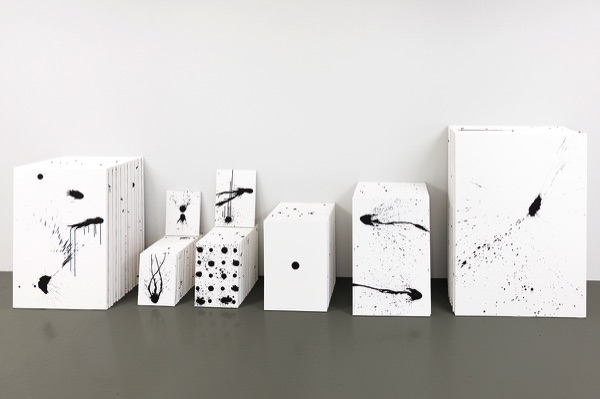THE ART TURN
MODELS OF AUTHORSHIP AND CONSTRUCTIONS OF IDENTITY
by Heinz Schütz
Art is a product made by an individual artist. The relationship between the two, considered foundational, which for a long time largely excluded women artists, has been rehearsed in the context of Western culture for centuries. It continues to inform understandings of art today, even if the focus is now increasingly shifting to the collective aspects of art and algorithms are beginning to replace human authorship in the digital realm. Yet today, the conventional art product would still seem to be to turning not only toward itself and beyond itself to the world, but especially to the artist. [...]
The Signature
Early precursors of the signature can be found in Middle Age inscriptions on everyday objects and architectural elements, as well as on painted imagery and sculptures. The name of the producer is combined with the standard formula hunc fecit (made this), but sometimes phrased as me fecit (made me), a formula that transforms the product into a verbalizing subject, referring to its “creator.” In addition to, but sometimes instead of the producers, the inscriptions frequently name clients and donors, whose power, exhibited not least in the formulation fieri ussit (ordered me to make it), “artisanal” producers were at the mercy of. [...] In the transition from the Middle Ages to the Renaissance, when art began to be segregated from craft, becoming an autonomous field in its own right, the inscriptions that had previously been on the frame, externally to the image, were relocated within the imagery as a signature. This meant that the reference to the producer was now effectively inscribed within the image itself. In becoming a component of the imagery, the handwritten or monogrammatic signature seals the act of creation. It declares the image to be the work of the artist named, confirming “irrefutable” interconnections between the art producer and the art product.
KUNSTFORUM International vol 292 Nov–Dec 2023
Authorship. Appropriation. Identity.
Essays on a Contemporary Discourse
Tim Beeby, Unsigned Untitled Undated: 120 canvases for Munich, February 2023 [photo: Tim Beeby]
Factors External to the Work and Collective Art Production
A project by the artist Tim Beeby demonstrates the function of the signature in the contemporary context, bringing factors into play that transcend the visually perceptible image, that is external ones that inform the meaning of works of art. In Unsigned Untitled Undated, Beeby exhibits his canvases in stacks, sorted by size. Anyone who wants is able to take a work free of charge, or they can have it signed, dated, and titled, meaning that the artist will include the selected work in his catalogue raisonné and the fixed market price has to be paid.
The withholding of the signature and therefore any indication of who the producer is undermines the art turn. In contrast, if the signature names and confirms authorship, art becomes potentially marketable as an original. The market value can, in turn, potentially affect how highly the work is regarded, due to the (false) assumption that the price and significance of the art product correlate. In addition, a mass media that is fixated on the sensational tends to “iconize” the most highly priced art.
Besides market value, there are a range of factors that determine what is art as well as a collective of co-producers who are not assigned any explicit co-authorship, but who nevertheless play a role in creating the art product in the form it publicly appears. This collective, which alongside the artists themselves comprises the art world, is by no means homogeneous – the individual protagonists represent differing interests and positions, but are nonetheless influential. Curators not only determine what can be seen publicly but in employing their own concepts to generate meaning become “meta-artists” themselves. Senior museum staff decide what is to be included in collections and therefore canonized, what is to be displayed in the exhibition spaces, and what will disappear – often forever – into the archive. What powerful collectors decide to purchase determines which art will flourish on the market. There are also art historians, critics, and theorists who construct meaning through books, catalogues, and articles in the media and attract public attention to art, while websites and social platforms generate a new dimension of rapid consumption. The tourism industry too increases art's pop-cultural value when it includes art attractions in its agenda [...]
